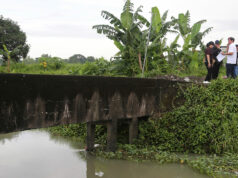Bank lending to power companies slows down
By Victor V. Saulon, Sub-editor
LENDING TO ENERGY generation companies has slowed down this year and is likely to remain that way for three to five years when power demand has expanded to take up the existing excess supply, a private banking official said.
“It’s not because we don’t want to lend. There are less deals. There are less new plants being built,” said BDO Capital and Investment Corp. President Eduardo V. Francisco in an interview.
He declined to say that the coming years would see a “drop” in lending to the energy sector, but said activity would be “slow” as it has been so far this year.
Mr. Francisco described the sector as “generally easy to lend to” because it is privatized, but banks need a power supply agreement (PSA) and approved by the Energy Regulatory Commission to cover the “revenue risk.”
“But in terms of technology, in terms of how WESM (wholesale electricity spot market) works, the regulatory [side], it’s very well structured already,” he said.
Of the energy technologies, coal-fired power plant projects are the easiest to lend to because banks understand them well, he said. But development for such facilities has been absent recently because of oversupply, he added.
“That’s why there’s no need to build,” Mr. Francisco said, adding that it seems power deficiency will occur in three to five years.
In the past, banks had been signing three to four financing deals for power plants. But so far this year, Mr. Francisco noted BDO had agreed to fund only one or two projects, including Atimonan One Energy, Inc. (A1E), a project of Meralco PowerGen Corp. (MGen).
The developer has yet to draw down on its loan, he added.
Late last year, MGen said it had agreed with lenders the terms of a P107.5-billion loan from eight banks to fund about 70%-75% of its 1,200-megawatt (MW) coal-fired power plant in Atimonan, Quezon.
For the coming years, he said funding for the sector would include refinancing for existing loans, aside from small renewable energy projects at around 20-50 MW that a single bank can finance.
Mr. Francisco said if banks could understand how renewable energy projects are commercially viable through the retail electricity market, banks might be able to structure a deal.
Asked about banks’ appetite for liquefied natural gas (LNG) projects, he said: “[For] LNG in general, the problem is ang daming (there are many) moving pieces. We talked to many people on LNG but nobody has come up with anything concrete.”



